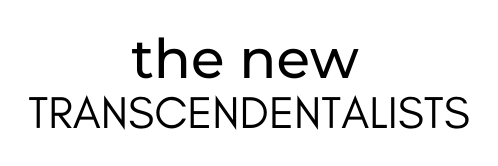How to Set Goals You’ll Actually Achieve
Do you want to change your life, but you aren’t sure how to do it? Do you sense that there’s more to life, but you’re stuck in a rut?
If so, then I feel you. I was in the same exact place. For a long time, my life just felt kind of dull and unfulfilling, even though there was nothing wrong, exactly. But deep down, it felt like the life I was living wasn’t the life that wanted to live in me.
So I set out to make some changes. The first thing I knew I wanted to do was get healthier. I also wanted to make more time for creativity and connection in my life. But I realized that after a few months of declaring I wanted these things in my journal, almost nothing had really changed. I just felt more stuck. That’s when I decided that I actually needed a plan.
I sat down and drew up a step-by-step plan of how I was going to make lasting changes in my life, and you know what – it worked! I actually began to see changes in my life, including getting better, more restful sleep, having more energy during the day, getting rid of the bloating and gas that had plagued me for years, and completely eliminating my painful PMS symptoms! Yep, you heard me – I no longer get painful menstrual cramps and bloating during my period.
How did I do it? I’m going to walk you through the 5 Steps I took to set goals and actually achieve them.
Step 1: Figure out what it is you actually want to change
Action Step: What change do you want to make in your life? Start out with a broad category, like health, job, relationships, finances, etc.
Step 2: Visualize and get specific
The main problem I faced when I was trying to make changes in my life and getting no results is that I wasn’t getting specific enough about what I actually wanted. My initial goal was to be in optimal health. But what does that actually mean? It’s a pretty broad goal, and it could mean something different for everyone.
I had to sit down and get really specific. What did optimal health look like for me? What did optimal health feel like for me? I put some meditation music on, laid down, closed my eyes, and began to visualize what the me in optimal health looked, felt, and acted like. Then I got up and journaled all about it. This helped me get down to the specifics of what I actually needed to work on.
Here are some of the things I wrote down when I visualized what optimal health actually looked and felt like for me personally:
- No more bloating or gas
- Feeling very light and detoxed rather than feeling heavy and foggy
- More energy – I wake up feeling rested and ready to go
- Deep, restful sleep all through the night
- No more painful PMS symptoms – balanced hormones
- Someone who gets up in the morning and feels motivated and excited about the day
Notice here that optimal health for me didn’t mean getting toned muscles or losing weight, like it might for others. This is a perfectly fine goal for others, but it wasn’t how I envisioned optimal health for me, and this distinction was important for me to understand, as you’ll see in step 3.
Action Step: Take your broad category from step 1 and get really specific. Visualize what that goal actually looks and feels like for you personally and write down a few physical indicators that will actually prove that you’ve made progress toward your goal. For me, it was more restful sleep without waking up in the middle of the night, no more gas and bloating, and no more painful PMS symptoms.
Step 3: Research
Okay, you’ve got a specific goal in mind, and you’re clear on some actual indicators that will provide evidence that you’ve actually made some progress. But before you dive in and start making some changes, you need to do some research.
This is often an overlooked and underestimated step in the process. Many times, people will go straight from setting the goal to trying to put it in action, without doing any research about how best to go about it or make a plan. This results in frustration because you’re not seeing any changes or improvements because you’re going about it in the wrong way.
Remember how I said that getting specific about what your goal looked and felt like was important for step 3? That’s because you need to know what to actually research. When I looked over my bulleted list, I realized that I was really looking for ways to detox my body and balance my hormones. Making these kinds of changes were primarily going to be related to diet rather than exercise. If I had visualized optimal health as getting really toned muscles, then my research might have taken me somewhere else. Do you see why it’s so important to get specific about your goal in step 2?
My favorite places to do research are reading books and blogs, listening to podcasts, and watching Youtube videos. For my particular goal, I found a few books that I LOVED, and then I searched for those authors on podcasts and listened to a few of their interviews to understand the content more deeply.
Another thing I did during this step that I think is important to mention is that I let my intuition guide me. There are hundreds of books, blogs, podcasts, and resources out there! How do you know which one is right for you, especially when one author or expert might totally contradict another?
Let your intuition guide you and ASK for guidance.
Something strange happens to me anytime I want to learn about something new. I ask God for guidance, and suddenly the perfect teachers come into my life. This is one of the most common ways that synchronicities happen in my life. I started seeing certain authors and concepts pop up over and over, and I just knew that I was meant to explore it further. I found about 4 different authors that I felt intuitively guided to, and the crazy thing is that they were all basically saying the same things in their research and teachings. This helped me immensely for the next step in the process.
Action Step: Do some research. Seek out books, blogs, podcasts, or videos that cover the thing you’re trying to work on. Let the experts guide you! And if you’re feeling confused about where to look, ask for guidance and then pay attention to what pops up in your social media feeds, conversations, and life. It might be a sign guiding you toward where you need to go.
Step 4: Make a plan
This step consists of more than just doing more or less of something everyday. When you make a plan, you first have to take inventory of what you’re currently doing so that you can see where changes need to occur.
For me, I sat down and wrote a detailed list of every single thing I did on a typical day. Then I had to get real with myself about which patterns and behaviors weren’t aligned with my particular goal.
What I learned is that I have always prided myself in being ‘healthy’, at least I thought I was. But when I made a very detailed list of everything I did in a day, I noticed that while my main meals were pretty healthy and balanced, I was always snacking a lot in between meals, and I would always end my night with a sugary treat or dessert. From my research, I learned that these snacks were probably spiking my blood sugar, and the reason I probably craved them (and desserts) in the first place was because my main meals during the day weren’t balancing my blood sugar. I kept seeing this concept all over the place – blood sugar, blood sugar, blood sugar. I knew I was onto something!
When I went to make a plan of action, I decided I needed to meal prep and make sure I was eating a healthy balance of protein, fat, fiber, and greens at every meal. I also made a commitment to eliminate snacks and desserts from my diet for 30 days.
Action Step: Now that you’ve done the research, make a plan. First, take inventory of your daily habits and routines. Identify any routines that might need to go so you can make room for ones that align with your goals and the life you envision once you’ve achieved your goal. Then set out to make a plan that will help you get there.
Step 5: Be Consistent
We’re almost there! You’re well on your way to actually achieving your goal. The only thing left to do is be consistent. But it’s harder than it sounds.
Remember, the day you plant the seed is not the day you eat the fruit. Goals aren’t going to be accomplished just like that. They take time to germinate. Patience and persistence are key for any real lasting change to occur.Making time each week to check in with your progress can be helpful, as can creating a daily or weekly habit tracker.
For me personally, I created a meal planner for every day of the week and hung it on my fridge in the kitchen where I could see it. Then I would check off each meal after I ate it. For some reason, being able to check something off the list gave me a sense of accomplishment and helped me stick with it.
I also journaled about my progress and the changes I noticed each week. I went back to those physical markers I had identified in Step 2 and reflected on them.
I am really proud to say that the next time my period came around, I had no PMS symptoms whatsoever, and my flow was very healthy. I was also getting tremendous sleep like never before, and my gas and bloating had disappeared! There were still some things on my list that I hadn’t achieved yet, but that’s ok. The changes that had happened were proof that I was on the right track, and gave me the motivation to keep going. Now I can go back and do a bit more research on some of those things I haven’t seen changes in yet, and start the process all over again!
Action Step: Put your plan into action and be consistent. Keep track of your goals and check in with yourself and reflect on any progress you’ve made.
So there you have it! My method for setting and actually achieving your goals. I hope you found it helpful. If you’re working on setting and accomplishing a goal, I’d love to hear about it in the comments.
Lots of Love,
Jessica
And of course, this wouldn’t be a New Transcendentalists post without a few journal prompts. Here are a few prompts to get you thinking about changes you’d like to make in your life and how you can go about achieving them.

